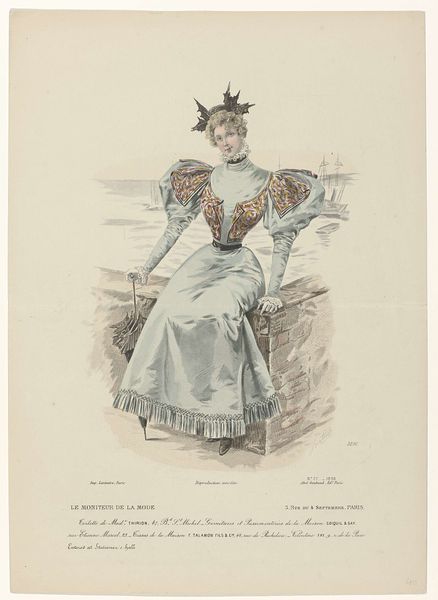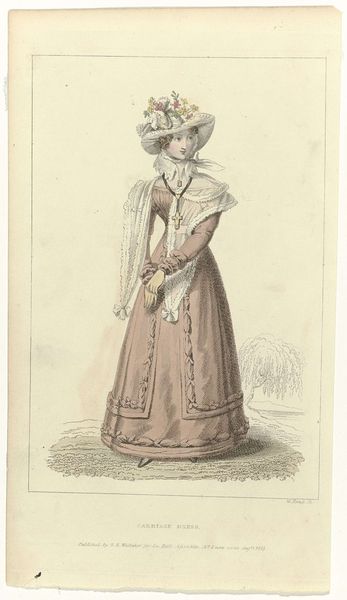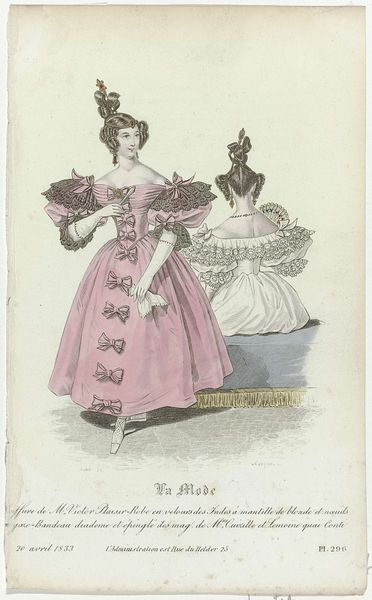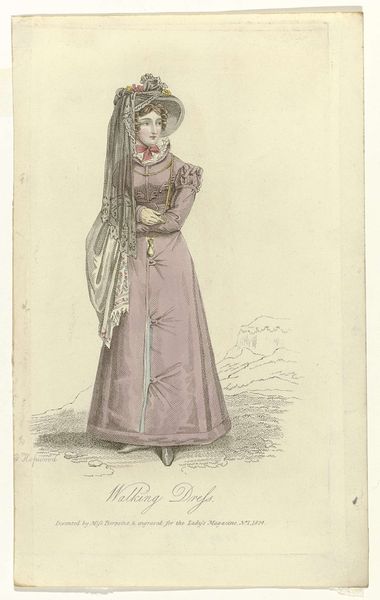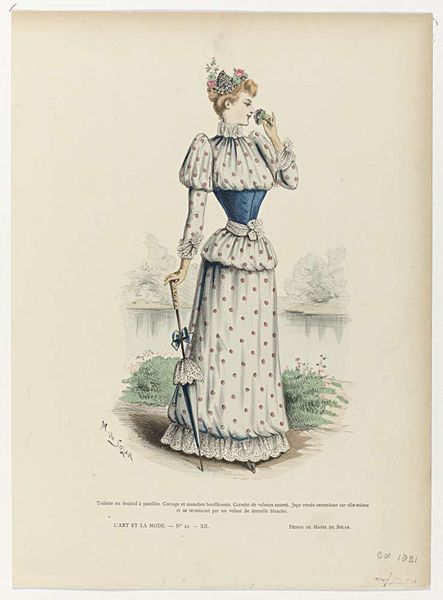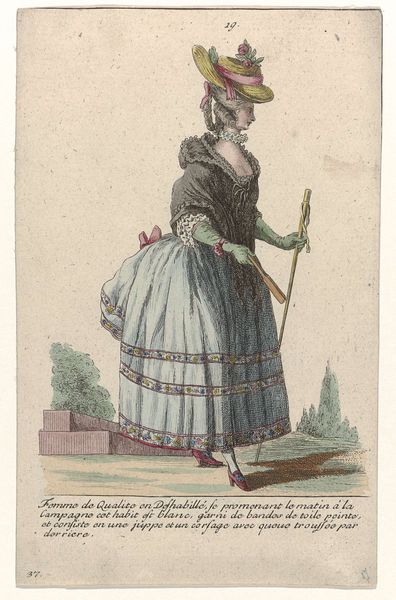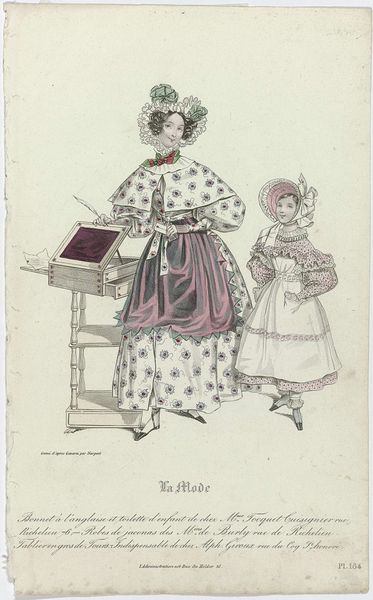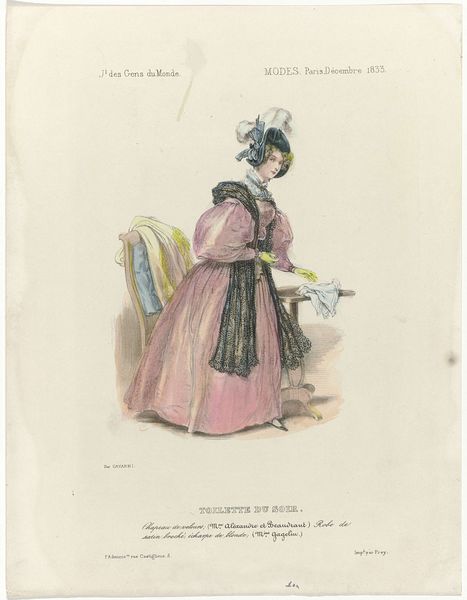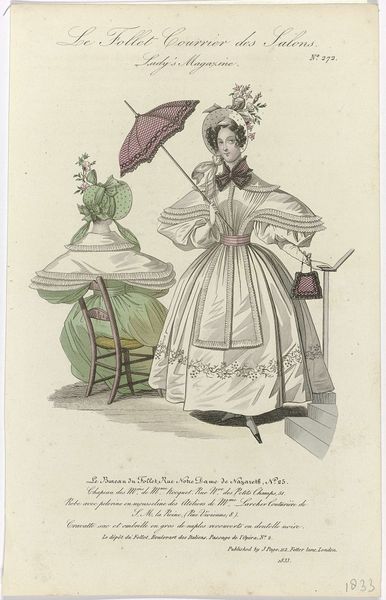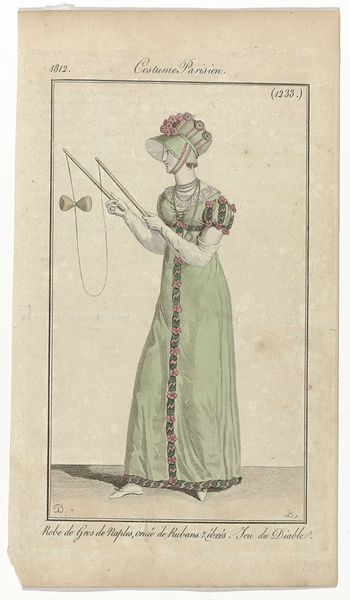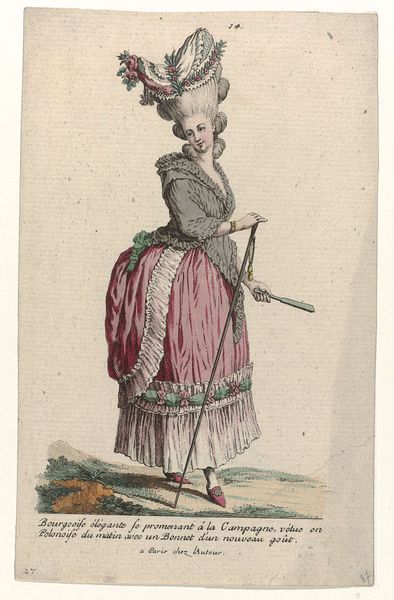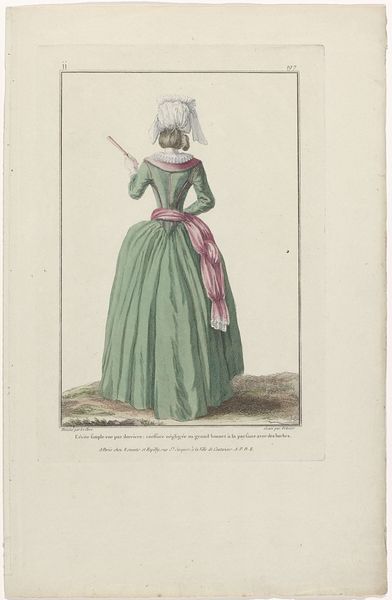
mixed-media, tempera, print
#
mixed-media
#
art-nouveau
#
tempera
# print
#
watercolour illustration
Dimensions: height 370 mm, width 263 mm
Copyright: Rijks Museum: Open Domain
Curator: This print from 1894 is titled *A Moda Illustrada, Jornal das Familias, No. 366, Nr. 3016*. The work combines mixed media, with tempera paint and printmaking techniques contributing to its art nouveau style. Editor: My first impression? Innocence with an underlying tension. The pale pinks and lace detailing project a sense of delicate femininity, yet the stark black flower details and almost severe pose hints at something else. Curator: I see that. The flower decorations hold the emotional weight; they echo traditional representations of beauty in their natural form, and they are so stylized to the degree that their organic aspect is lost, suggesting a controlled ideal. Editor: Exactly, and look at her holding what seems to be a paper fan in her hand. A gesture or power, or defiance, depending on her situation as a wealthy woman in Brazil in 1894? Was the artist thinking of pushing beyond acceptable social behaviour? Curator: It speaks of the period's aspirations toward idealized femininity, which were projected onto women within a patriarchal society; while the fashion might seem outwardly fanciful and decorative, it still reflected societal expectations and standards of beauty, but maybe this piece reveals them as being like the fan--flimsy? Editor: Perhaps. Fashion and art serve to constrain and confine, or to inspire and uplift. What interests me most here is considering which narrative prevails and which one will endure, especially within intersectional discourses that examine the relationship between art, fashion, and female representation. This may not seem explicitly political but her very existence and style would be a declaration. Curator: It's also hard to look at such work outside the context of colonialism, as European styles were transplanted and transformed through global exchange and trade in the late 19th century. You almost need to understand that transfer as an active violence to see the deeper message in its design and intent. Editor: A powerful reminder to dig beneath surface aesthetics, exploring fashion, culture, and its relationship to female agency and power. I agree it is a powerful starting point for examining how representations can be contested. Curator: Right, in looking closer at seemingly passive imagery, we unearth complex power dynamics embedded within material culture and tradition.
Comments
No comments
Be the first to comment and join the conversation on the ultimate creative platform.
